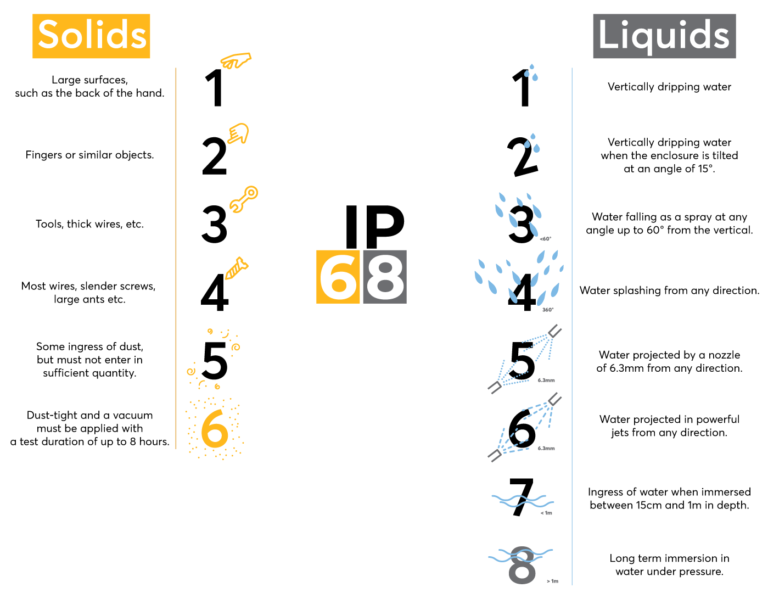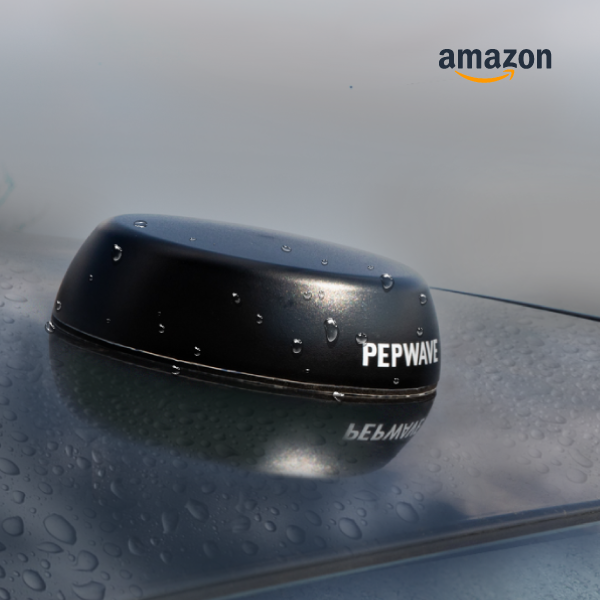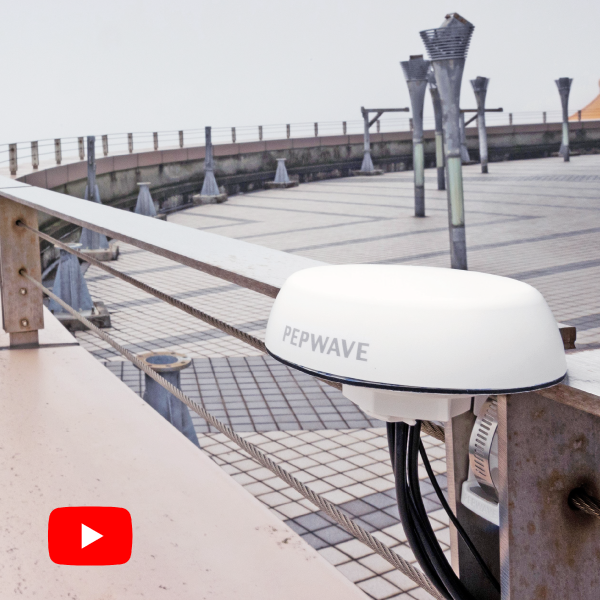Choosing the right antenna requires looking into many factors such as its gain, pattern, efficiency, and even housing design. Especially for outdoor and mobile applications, housing design is often a determinant factor.
What is an IP-rating?
Nowadays, most devices, antennas included, come with a data sheet identifying the device’s IP-rating. IP refers to Ingress Protection, indicating how well the hardware can avoid keeping particles from getting into and damaging the product.
An IP rating is classified using numerical digits. The first, with a max rating of 6, represents how dust-resistant an antenna is. The second digit indicates how well antennas protect against water or liquids, with a max rating of 8. Therefore, antennas with a rating of IP68 offer the highest protection against both dust and water. This means the enclosure ensures ultimate protection against dust and that it also can be safely submerged in water at a maximum depth of up to three meters without risk of water leaking.

Size Does Matter
Since an antenna may be used outdoors and for mobile applications, an antenna’s size and profile help determine its suitability. Having a low profile means an antenna can be installed with ease. This can be done on a flat surface or using a mounting bracket. For example, low-profile antennas can be installed on the rooftops of patrol vehicles.
Additionally, the size of an antenna affects the drag effect. For instance, Smaller antennas have less surface area for drag, which makes them suitable for mobile applications. In other words, a more compact antenna would have greater wind resistance ability.
Material and Design Make the Antenna
Outdoor applications mean coming into contact with unexpected and varying weather conditions. In order to avoid mechanical damage, manufacturers need to carefully select the material in making the antenna. Also, the overall design should be durable enough to withstand harsh weather conditions.

Peplink’s Mobility Has Got You Covered
Designed specifically for outdoor and mobile use, Peplink’s Mobility antenna series places great importance in all these aspects. With their compact design and low profile form, these antennas have minimal drag effect and can be installed with ease. All antennas in the Mobility series have IP68 rated enclosures, with maximum resistance to dust and water.
Thus, users don’t have to worry about mechanical damage with the Mobility antenna series. With the robust design, the antennas are vandal-proof, capable of holding out against the toughest weather conditions. What’s more, with UV stable plastic as its material, each antenna has protection from the long-term degradation from UV light, perfect for outdoor and mobile use.



